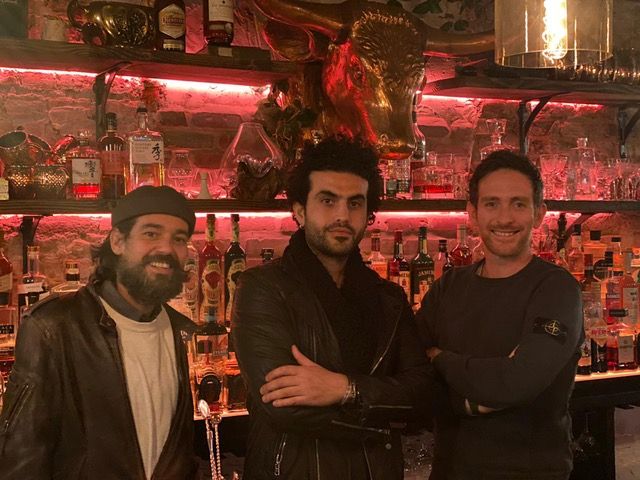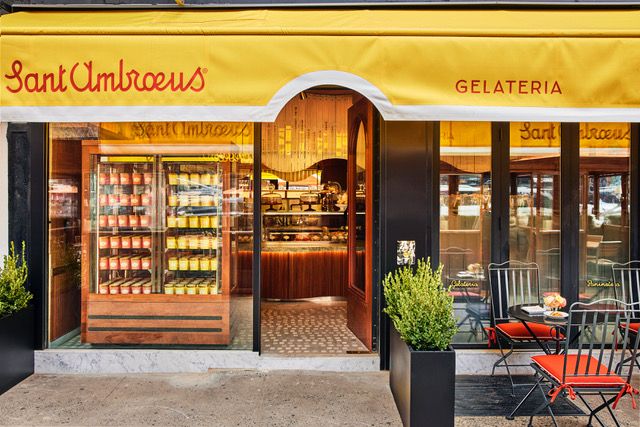Total trust in the vaccine, plus a vaccination campaign that is now open to 16+. New now looks at the future with optimism. Borders are still closed, but domestic tourism is starting to move. For instance, at Easter, a small queue appeared at the Museum of 9/11, and it was clear that those who stopped for a selfie at the Reservoir of Central Park, were not locals.
The first testimonial of this desire of rebirth in the Big Apple was Joe Bastianich, we wrote about it here. We must start by recalling that restaurants had various possibilities to start working after the two months of complete lockdown in 2020. Outdoor service was always allowed, in fact it was supported when mayor Bill De Blasio closed some roads to create the possibility of placing more tables outside. Of course, this did not include fine dining restaurants who clearly couldn’t offer an equal service with waiters walking on the pavement. Many of these restaurants aren't even on the ground floor.
With the colder months, many establishments equipped themselves to protect the tables on the pavement: luckily the town liberalised the use of outdoor heating, until that moment forbidden for safety reasons. So gas and electric heating appeared a bit everywhere. The most entrepreneurial even built some wood huts where each table had its separate space to guarantee social distancing among different households.
Transparent plastic igloos were a big hit and appeared in front of many restaurants. Since the 14th of February, governor Andrew Cuomo, before the vaccine campaign even started, reopened the restaurants: first seating 25% of the guests, then 50%. It is a known fact that people dine out – or have a brunch – in New York much more often than in Italy and in fact restaurants base their business mostly on local clients. Hence restaurants in residential areas were the ones to suffer the least.

Emanuele Nigro, Riccardo Orfino and Wael Derek behind the counter of the new-born Alice, 126 W13th street
«The pandemic, in the end, hit us only slightly», says Riccardo Orfino, «We were completely closed only two months, and by seating 50 people in the huts on the pavement, during the weekends we've managed to seat as many as 200 people: Osteria 57 basically never stopped».
One must also note that when facing difficulties, Italians know how to pull the right ideas out of the hat. So Orfino, with his business partner Emanuele Nigro, took over another restaurant, also in the West Village for a project more focused on fine dining: «It's called Alice, and was born on the ashes of Gradisca, a historic restaurant serving Bolognese cuisine. These three spaces, when fully running, will seat up to 200 people, plus a good number of people outside». The theme is the same as Osteria 57; no meat, only fish and vegetables, with a strong attention to raw fish and aromatic herbs, a passion of the chef. The bill is around 80 dollars. The first clients who came to have a taste include Joe Bastanich: he was enthusiastic.
Michele Casadei Massari with his Lucciola in the Upper West Side, thanks to the pandemic has changed style. No longer a simple round-the-corner restaurant, but a project in which wine has an importance that we could call unique for New York, with 2K bottles in the cellar: «I've focused on large formats, and very important producers, and for sure I have a range many are envious of. As for the food, where I'm once again in the frontline, I've focused on meat and on Italian tradition. We offer both original Japanese Wagiu beef, and large cuts from an American organic breeder, of the highest standards: of course I'd like to have some meat from Piedmont, but you can't import it».
Meanwhile, with the culinary restyling of Lucciola, the Upper West Side now has an exclusive steak house with an average bill of 75 dollars (there's a surf ‘n’ turf dish with a Florentine steak of over 1 kilo and 500 grams of Calvisius Siberian caviar, worth 999 dollars) that was missing. Michele, a social media star, is also very well known in Italy, and has just become an Ambassador of Parmigiano Reggiano in the United States, and a member of the Ambasciatori del Gusto. He was among the first – if not the very first – to use heated transparent igloos, so much so he was featured in the New York Times.
Andrea Belfiore, ex musician now chef was fast enough to change his business model of Italian cooking classes into online courses: «I used to hold two events per week, now I hold two per day. I have people connected from all around the world, and some large companies like LinkedIn, Google, Twitter have added my digital cooking classes to their team building programmes featured in their various locations across the world».
To end this overview of Italian creativity that reacted, here is Sant’Ambreus which opened two new locations: one is over 600 square metres, in the Financial District, the other is an ice cream shop in Soho. «Ever since the city allowed us to seat guests inside, if only up to 25% of capacity, we've noticed a strong desire to dine out among locals, both for lunch and dinner», says Jacopo Giustiniani, chief operating officer at group SA. «Every day, more and more people are being vaccinated and feel at ease dining out, and this summer we'll also open a new restaurant, Felice, in the Upper West Side».

Eleven Madison Park which over the past months has offered a very exclusive delivery service, has announced it will open on the 10th of June. Le Bernardin, Masa, Per Se, Chef’s Table at Brooklyn Fare, the other three-starred restaurants in town, have already opened, following regulations.
Among the closures that created lots of uproar, those of David Chang. The chef of Korean heritage closed Ssam Bar in the East Village – but he's about to open it in Seaport – and Kavi on the Hudson River for good. Ko instead took advantage of the pedestrian area in front of the restaurant, after offering an original and affordable delivery service.
At a federal level, the National Restaurant Association claims that 17% of restaurants in town have closed. On the ashes of these closures, however, something was born again. Like the famous Tribecas Kitchen diner where, after his dad died because of Covid, Andreas Koutsoudakis decided to reopen after completely renovating the décor: no more dark colours, typical of diners, but a light setting and a more refined cuisine. A way to react to the loss of his dad, who opened the restaurant in 2014. The new chef, Jack Logue, who graduated from Alma in Colorno, has already stood out for his take on Mac and Cheese with calamarata, mushroom and beef cheek.
However, the opening that that truly gave a sense of this feeling of rebirth in town was that of Balthazar, the French-style bistro in Soho beloved by the stars. The day it reopened its doors on 80 Spring Street there was a sort of virtual standing ovation on social media. It had been closed for a year and its tables, outdoor and indoor, were immediately fully booked.
Translated into English by Slawka G. Scarso